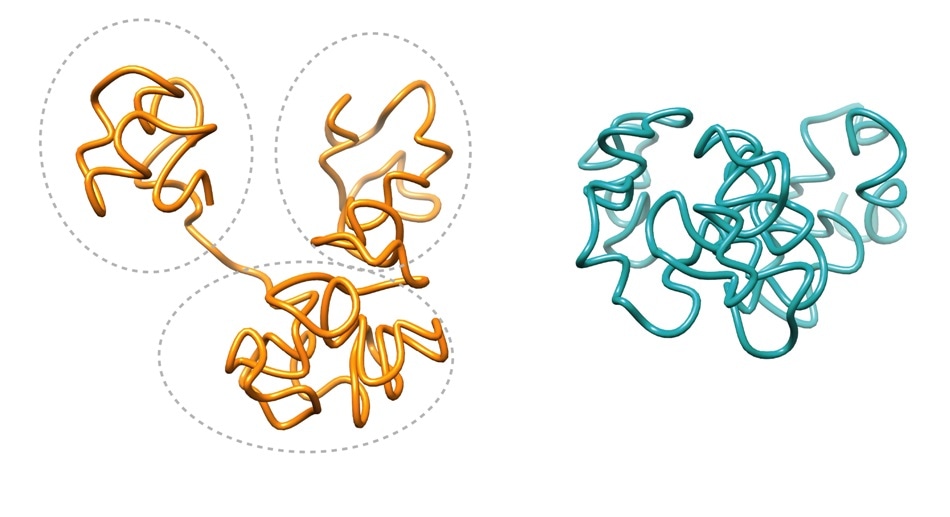According to a study published recently in the Nature Genetics journal, the three-dimensional (3D) structure of the human genome is fundamental to provide a quick and strong inflammatory response, yet it is surprisingly insignificant for reprogramming one type of cell into another.

A region of the human genome with CTCF (left) and one without (right), resulting in two different shapes. Image Credit: Gregoire Stik.
These findings provide a deeper understanding of the underlying association between genome folding and cellular functions.
Every human cell has 2 m of genome compressed to a size of 10 µm inside the nucleus. Genome folding is not a mere packaging solution but more than that. It helps genes to establish physical contact with other types of genes or a regulatory element that may be situated remotely along the chromosome. This is significant for the functioning of cells.
Architectural proteins weave the accurate 3D structure of the genome together. CTCF is among the most eminent of these structural proteins. Together, CTCF helps to mold the overall 3D structure of the genome, and this is the reason why it has been demonstrated to be significant for the development of embryos, cell cycles, DNA repair, and several other crucial processes that make it an area of intense research.
If you think of the structure of the genome as a house, CTCF is the scaffold dividing the space in rooms and shaping the building. Studying CTCF helps us understand the glue that holds the genome together, and by proxy the role of 3D genomic architecture in various fundamental processes in life.”
Thomas Graf, Study Senior Author and Group Leader, Center for Genomic Regulation
The role of CTCF in transdifferentiation is quite controversial, especially when a cell reprograms itself into another cell type without experiencing an intermediate state—for example, pancreatic alpha cells changing into insulin-secreting beta cells following the injury of the pancreas.
To explore this, scientists from the Barcelona-based Center for Genomic Regulation (CRG) have developed a special system in which human B cells can be forced to change into macrophages. To expose the role of CTCF in this process, the researchers used CRISPR genome editing tools to decompose the protein and analyze the variations in genome organization as the fate of the cells changes.
To our great surprise, cell transdifferentiation continues to take place with or without CTCF, even though the shape of the human genome changed. Answering one question has led to another. What are the other factors that participate to the 3D architecture of the human genome that are essential for one cell to turn into another?”
Thomas Graf, Study Senior Author and Group Leader, Center for Genomic Regulation
Most significantly, the scientists also observed that the depletion of CTCF affects the ability of a cell to have a full-blown inflammatory reaction in the presence of bacterial endotoxin. It is one of the first instances where scientists have identified an association between inflammation and 3D genome architecture.
The findings of our study could help us understand why an inflammatory response is impaired or exaggerated in some situations. In the far future it might even be used to module the inflammatory response.”
Gregoire Stik, Study First Author and Postdoctoral Researcher, Center for Genomic Regulation
“We’ve known about CTCF for decades yet we’re still uncovering its true role in genome shape and cell function. There are many more mysteries folded deep in the genome yet to discover,” Stik concluded.
Source:
Journal reference:
Stik, G., et al. (2020) CTCF is dispensable for immune cell transdifferentiation but facilitates an acute inflammatory response. Nature Genetics. doi.org/10.1038/s41588-020-0643-0.